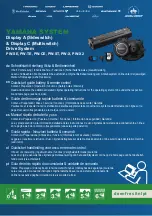
Communication / PROFIBUS
09.2008
6SE7087-6QX70 (Version AK) Siemens AG
8.2-94
Compendium Motion Control
SIMOVERT MASTERDRIVES
8.2.9.2 Communication
model
Clock synchronous communication is implemented by the use of an
isochronous clock pulse signal on the bus system. This cyclical,
isochronous pulse is transmitted as global control signal by the master to
all bus participants. Master and slave can thus synchronise their
applications to this signal.
Special error mechanisms in every participant permit stable
communication even with sporadic failure of the system pulse.
For drive technology the clock synchronous communication forms the
basis for drive synchronization. For this not only is the telegram traffic on
the bus system implemented in an isochronous time slot, but also the
internal control algorithms, such as the speed and current controllers in
the drive or the contollers in the higher-level automation system, are
synchronized in time.
Master application
DP cycle
Speed/current
controller pulse:
Slave 1 ... 3-
application:
DX
Slave
1
Clock
pulse
DX
Slave
2
DX
Slave
3
acycl.
+
DX
Slave
1
Clock
pulse
DX
Slave
2
DX
Slave
3
Pos. control
R1
R2
R3
Actual pos.
sensing
Setpoint
transfer
DX = Data-Exchange Telegram
Rx = Controller from slave x
Controller pulse
Controller pulse
Setpoint
transfer
Actual pos.
sensing
R1
R1
R1
R1
R1
R1
R1
R1
Actual pos.
sensing
Setpoint
transfer
Fig. 8.2-31
Clock synchronous communication
Clock synchronous
communication
















































